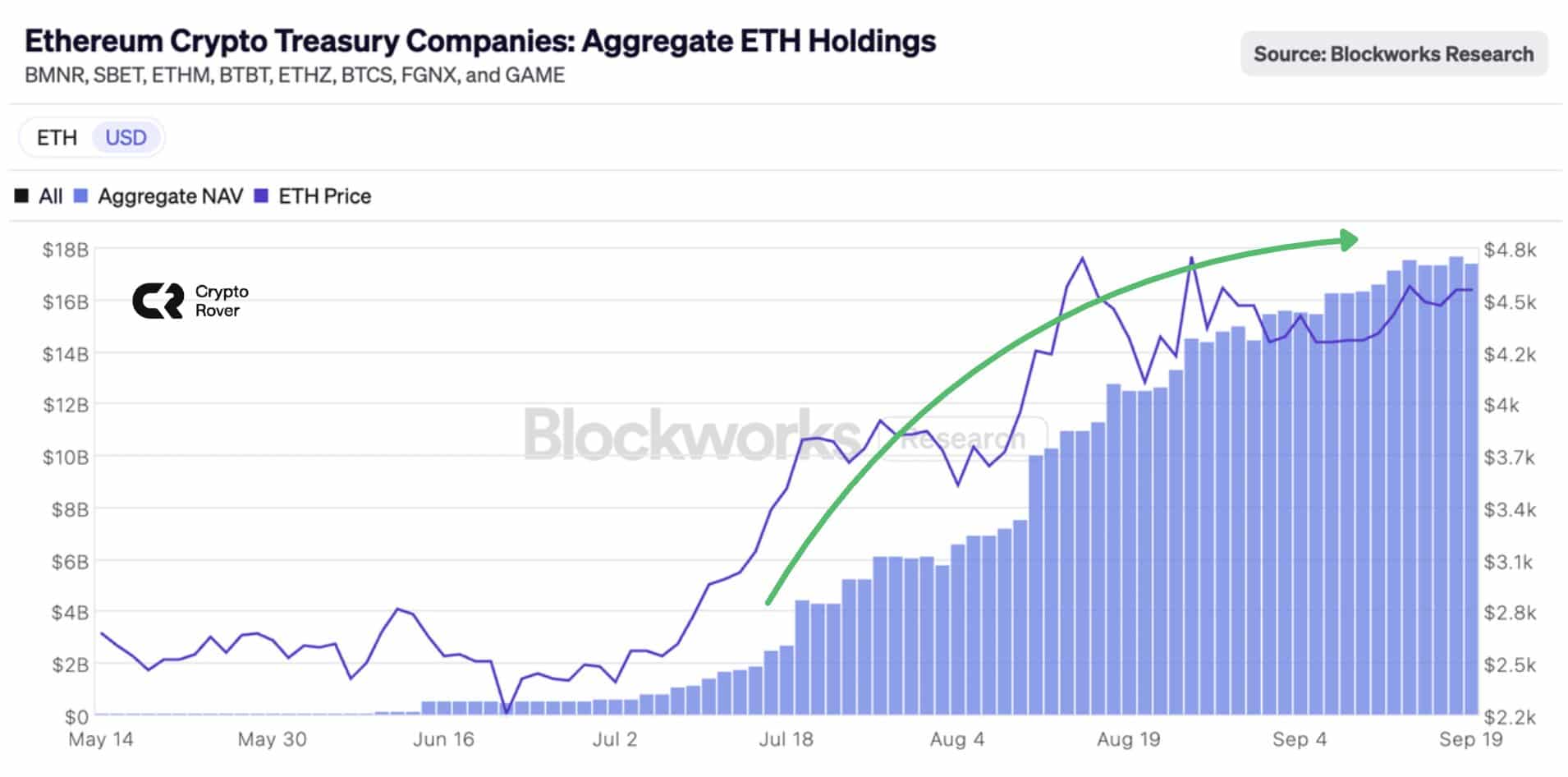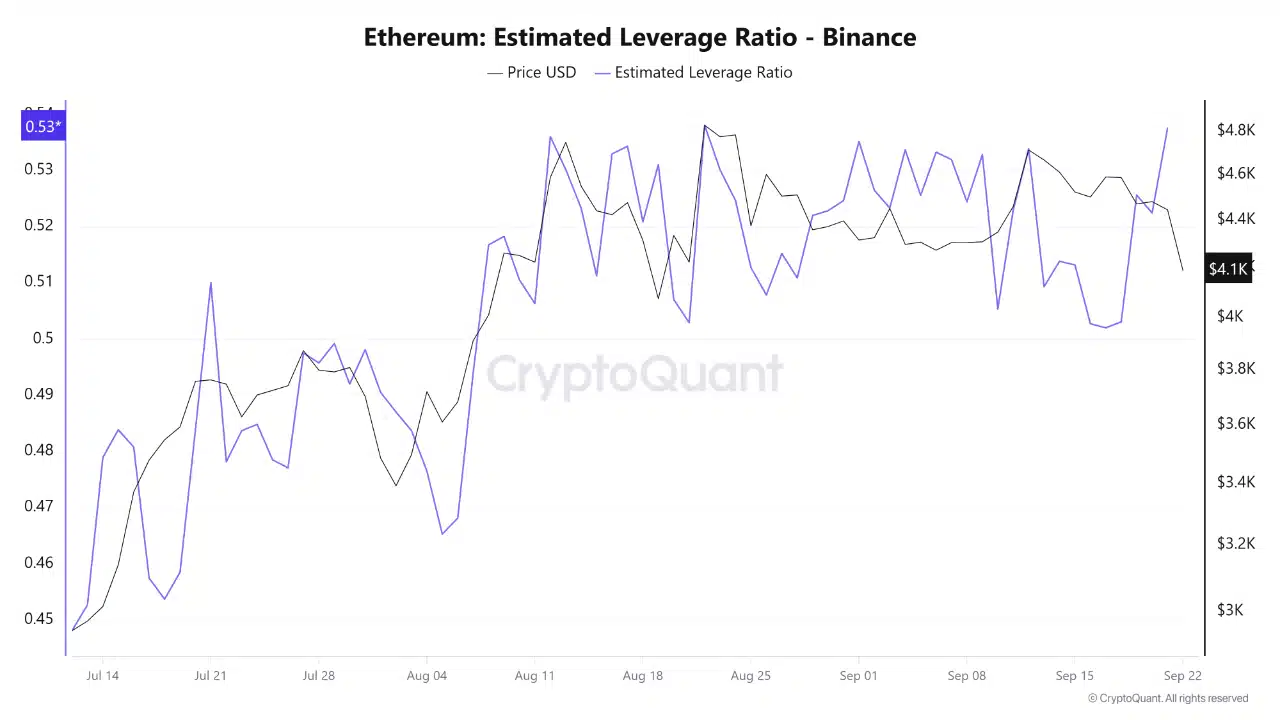Ethereum treasuries are accumulating ETH aggressively — corporate holdings have climbed toward $18 billion while market Estimated Leverage Ratio (ELR) has surged near 0.54, raising heightened risk of volatility and potential liquidation-driven swings for ETH.
-
Corporate ETH holdings near $18B, signaling strong treasury accumulation.
-
Estimated Leverage Ratio (ELR) rose from 0.50 to 0.54 in days, increasing short-term risk.
-
Higher leverage historically precedes high volatility — prepare for breakouts or sharp corrections.
Meta description: Ethereum treasuries surge to nearly $18B and ELR spikes to 0.54, raising ETH volatility risks — read the latest analysis and action steps.
What are Ethereum treasuries doing and why does it matter?
Ethereum treasuries are buying ETH at record pace, pushing aggregate corporate holdings toward $18 billion. This institutional accumulation suggests strong on‑balance confidence, but rising market leverage counters that safety by increasing the chance of rapid price swings.
How much ETH are companies holding and which data shows this?
Aggregate ETH holdings by treasury firms are reported close to $18 billion (Blockworks Research). The uptick began mid‑July and tracked ETH’s move toward $4,800 before consolidating near $4,100. Source mentions: Blockworks Research (holdings) and CryptoQuant (derivatives data).

Source: Blockworks Research
How does rising leverage affect ETH volatility?
Rising leverage concentrates downside risk: as the Estimated Leverage Ratio (ELR) climbed from ~0.50 to ~0.54 in three days, the market became more sensitive to downside triggers. Higher ELR readings historically coincide with outsized price moves.

Source: CryptoQuant
When could ETH face a liquidation-driven correction?
With ELR elevated and spot accumulation by treasuries ongoing, a coordinated catalyst or sharp price rejection could spark liquidations. If selling pressure intensifies, historical patterns suggest price tests below $4,000 are possible before a renewed bid emerges.
How should investors and treasuries prepare?
- Monitor ELR and derivatives open interest: watch sudden surges as early warning signals.
- Manage leverage exposure: reduce concentrated leveraged positions during ELR spikes.
- Use staged accumulation or hedging: treasuries can ladder purchases and consider options for downside protection.
Comparison: Treasuries vs Market Leverage
| Metric | Current Reading | Implication |
|---|---|---|
| Aggregate treasury ETH | ~$18B | Institutional accumulation signal |
| Estimated Leverage Ratio (ELR) | ~0.54 | Elevated short-term volatility risk |
| Spot price (snapshot) | ~$4,100 | Consolidation zone — catalyst driven move expected |
Frequently Asked Questions
How much ETH do corporate treasuries hold now?
Corporate treasury holdings are estimated close to $18 billion, based on aggregate tracking from industry research. This marks a notable build since mid‑July and underscores growing institutional ETH exposure.
What is the Estimated Leverage Ratio and why is it important?
The Estimated Leverage Ratio (ELR) measures leverage across derivatives relative to spot liquidity. A rise to ~0.54 indicates higher market fragility and a greater chance of rapid, leverage‑driven price moves.
Key Takeaways
- Institutional accumulation: Treasuries have pushed aggregate ETH holdings toward $18B, signaling strong corporate interest.
- Leverage risk: ELR jumping to ~0.54 increases the probability of significant short-term volatility.
- Actionable steps: Monitor ELR and open interest, manage leveraged exposure, and consider staged buys or hedges.
Conclusion
Ethereum treasuries are clearly accumulating ETH while the derivatives market shows rising leverage. Together, these trends create a mix of institutional confidence and heightened volatility risk. Market participants should prioritize risk management and watch ELR and liquidity levels closely as the next catalyst could produce a decisive move. COINOTAG will continue tracking developments and providing data-driven updates.
